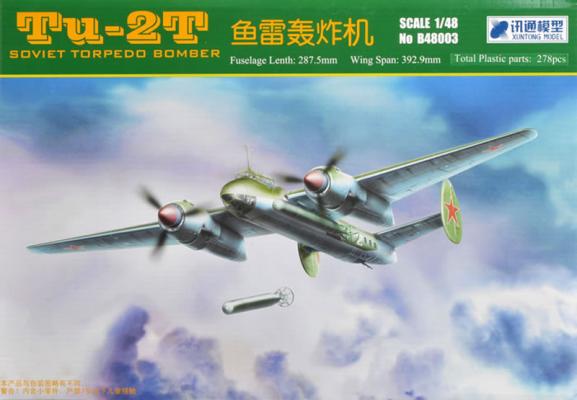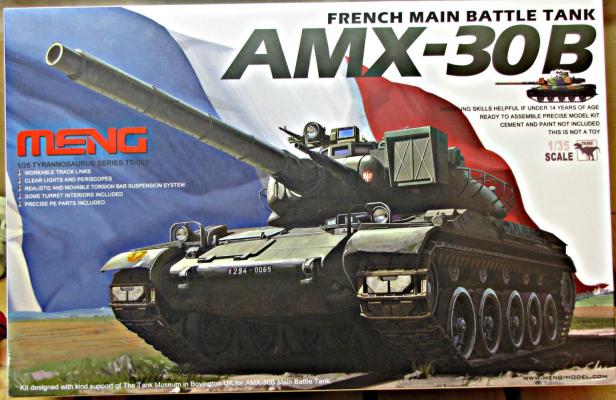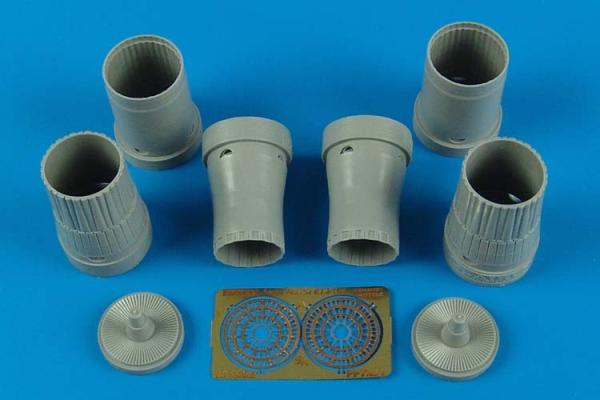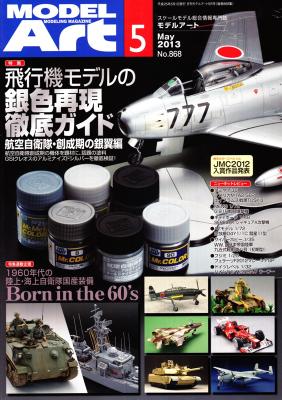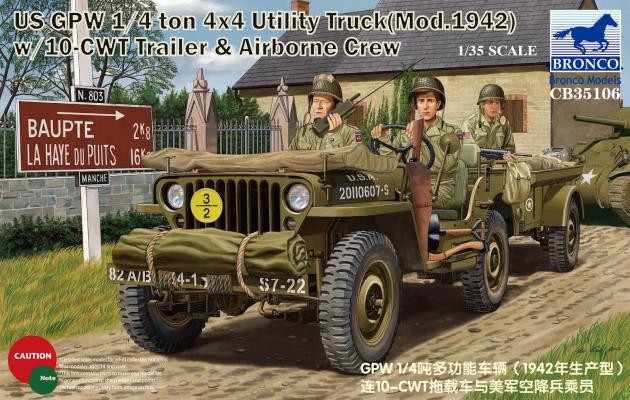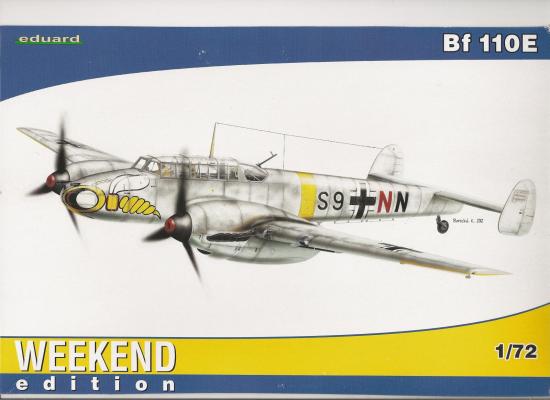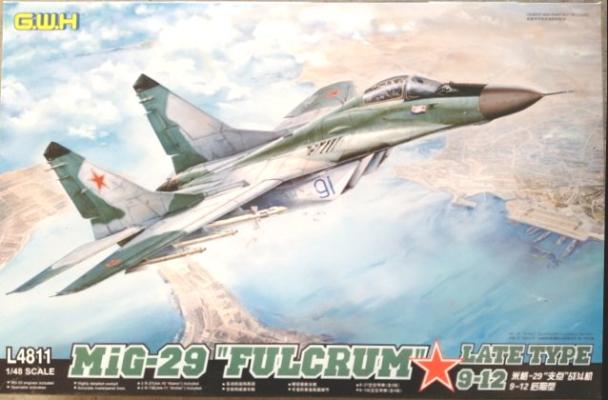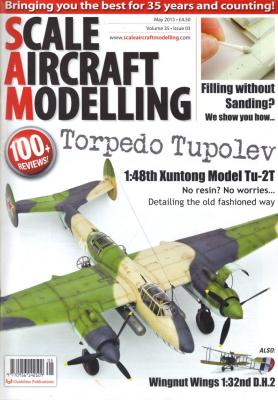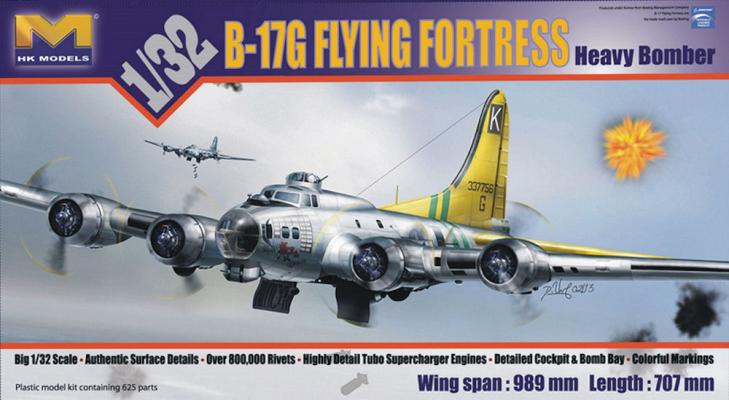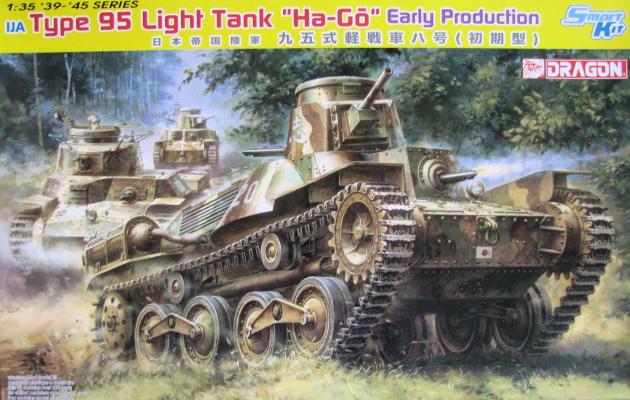The Tupolev TU-2 was introduced into service in 1942 and produced as several variants to include a high speed bomber, dive-bomber, interceptor, recon and as represented in this review kit, a torpedo bomber. The TU-2T torpedo bomber began it service in early 1945 with overall production of the TU-2 continuing until 1948. Russia retired the TU-2 in 1950 but sold many of them to other nation's air forces. China used the TU-2 until the late 1970’s.
May 2013
Meng exploded onto the modeling scene several years ago and has begun to roll out a variety of post-World War Two vehicles. The AMX-30B is one of Meng’s newest releases and it’s a keeper. Of the same generation of the US M-60 series, this was meant as a multi-national tank serving the needs of France and Germany. Germany dropped out of the project. The prototype was ready in 1960 and went into series production in 1966. Over 4000 were manufactured and exported around the world. It saw service in Desert Shield/Storm and continues to serve in other countries. The kit is composed of seven sprues molded in green and five sprues of track links and pads molded in brown, a small sprue of clear parts, a small fret of photoetch, and a lower hull and turret. There are decals for two vehicles. There are a total of 730 parts.
Aires with this detail set has provided the modeler with the means to upgrade the 1/72 Su-27UB Trumpeter kit. This resin accessory kit comes with eight resin parts that will assembly into two exhaust nozzles and one small piece of photo-etch that has two afterburner rings, one for each nozzle. The resin is typical for Aires being fine grain and flash free. The photo-etch looks to be stainless steel; at least no bending is required in this case.
Model Art Modeling Magazine is a Japanese publication that is released monthly. The text is mainly in Japanese with some English subtitles throughout. One quality about these magazines is the high quality of the photographs and the models that are used.
In this months magazine the feature article on probably one of the most daunting tasks that many modelers fear. Finishing models in natural metal finishes! This tends to send fear into the hearts of many modelers, including myself.
Model Art covers this subject in thirty seven pages using plastic models, actual pictures and paint examples with a mix of color and black and white photos. The models used are an F-86, T-33, C-46, H-21 and T-6. They use several different mediums to get the desired effect. The paint of choice for the article is Mr. Color and they use multiple colors and one color set, JASDF Aluminized Old-Timer Colors. The other medium that is used is a metal foil that is called Duralumin Finish.
Bronco has joined the list of manufacturers that have released a kit of the venerable “Jeep”. I believe Heller was the first, then Italeri, then Tamiya (twice) and Dragon. This (by first looks alone) is the New Standard! Bronco of course calls it a, “U.S. GPW ¼ ton 4x4 Utility Truck” but it is a “Jeep”! The title was probably changed for fear of copyright infringement attorneys. The box art states this kit represents a 1942 Model and I have no idea of the differences between a 1942 version and other versions. However, the rear panel does have the “Ford” logo stamped on it and only about the first 1000 or so vehicles produced had this. At some point, the War Department had “Ford” and “Willys” remove the embossed trademark stamping. The same “Ford” logo is also stamped onto the tires. I have found out that the Ford version was called GPW, or "G-Government Vehicle, P-80 inch wheelbase, W-Willys Pattern".
History
The Messerschmitt BF-110 has received a lot of bad press in recent years, mainly because it was not able to contend with comtemporary RAF fighters during the battle of Britain. However, following the Battle of Britain, the type continued in production, and actually was quite successful in the close support role, especially against the Russians, and later, with more powerful engines as the “Gustav” model, as a night fighter it was very useful against RAF night bombers.
Products in this review are:
Great Wall Hobby Mig-29 and Scale Aircraft Conversions (SAC) Landing gear for the GWH Mig-29 found at scaleaircraftconversions.com . Landing gear are available for $16.95, # 48213
The May issue's Cover article features the new Xuntong Tu-2T in 48th scale. This feature article serves as an excellent resourse for those planning to build the Tu-2T. Author and builder Marco Preto presents an in-depth review of Xuntong’s first release. Marco’s workmanship and skill are evident in the text and accompanying images. The article is a “must read” for anyone who wishes to build the Tu-2T.
This issue of SAM contains a “Feature Build” article and this particular article features the Wingnut Wings DH-2. Dai Williams does a fantastic job building up the WNW kit, sharing his techniques for shading and achieving a “translucent rib effect”. Being a fan of Wingnut Wings kits, and having one on the workbench at this time, I found Dai’s article timely and very useful.
As is the case in each issue of SAM, there are a number of “Compact Build Reviews”. In this issue there six CBRs.
Thank you to Mr. Neil Yan of HK Models and the IPMS Reviewer Corps for the opportunity to review a wonderful new model release in large-scale aircraft. This final installment will describe the surprisingly quick last steps, and my thoughts and conclusions about this great kit.
History
Production for the Type 95 began in 1936, and was first introduced in combat in 1937. The type 95 was a small, light tank weighing in at 7 tons and having a crew of 3. It was armed with a 37mm main gun augmented by 2 Type 97 light machine guns. The early version was powered by an 110hp Mitsubishi diesel engine for a top speed of 25mph (road) and was later replaced by a 120hp Mitsubishi NVD 6120 diesel that brought the speed up to 28mph. The Type 95 was obsolete by 1941 but soldiered on till the end of the war being used mainly in banzai charges or dug in as pill boxes. It was a good tank in the 30s but should have been replaced by 1941. There are at least 11 Type 95 survivors in the world today with 1 that is operational.

